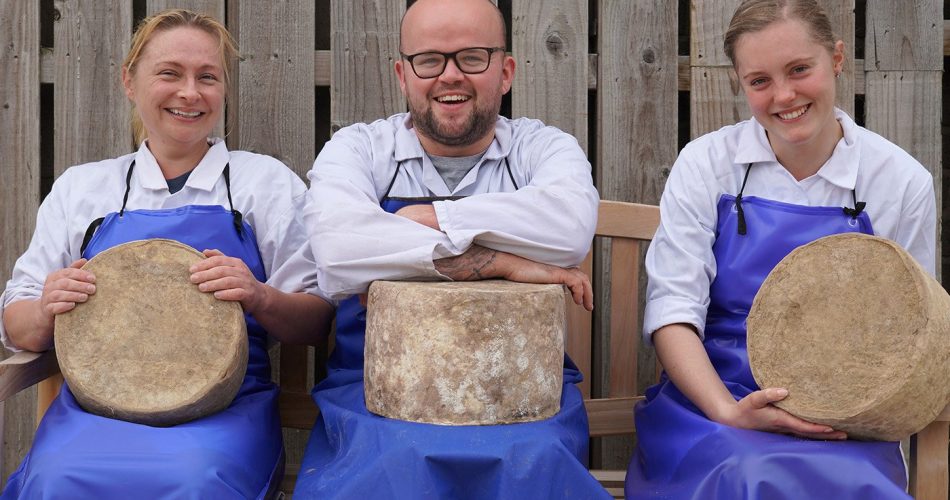The Best of Melbourne Made Cheese: Floridia Cheese Melbourne's One-of-a-kind Offerings
The Best of Melbourne Made Cheese: Floridia Cheese Melbourne's One-of-a-kind Offerings
Blog Article
Unlocking the Tricks of Artisanal Cheese Making: A Step-by-Step DIY Overview
In the realm of cooking craftsmanship, artisanal cheese making stands as a testament to the delicate equilibrium between custom and development. Each step in the process, from picking the right milk to perfecting aging methods, holds within it a wide range of knowledge passed down via generations. As we begin on this trip to debunk the art of developing beautiful cheeses, we are confronted with a tapestry of abilities and keys waiting to be unraveled. Join us as we check out the intricacies of this ancient craft, where scientific research, persistence, and art assemble to produce tastes that entice the senses.
Picking the Right Milk
When beginning on the trip of artisanal cheese making, the option of milk plays a vital role in establishing the top quality and attributes of the final item. The kind of milk chosen influences the flavor, appearance, and in general profile of celebrity. Raw milk, straight from the pet, is chosen by many artisanal cheesemakers as a result of its one-of-a-kind mix of enzymes, microorganisms, and taste substances. Nonetheless, using raw milk includes dangers and policies, making pasteurized milk a safer choice for newbies.
Additionally, the resource of the milk, whether from cows, goats, lamb, or buffalo, contributes distinctive tastes and attributes to the cheese. Each kind of milk brings its own nuances, enabling for a wide variety of cheese ranges to be crafted based on the selected milk.
Culturing and Coagulating
To start the cheese-making process, the essential steps of culturing and coagulating have to be meticulously executed to change milk right into curds and whey. Culturing involves introducing advantageous microorganisms to the milk, which after that begins the fermentation process. These microorganisms transform lactose (milk sugar) into lactic acid, developing the acidic setting needed for coagulation. The kind of culture utilized can significantly impact the taste, structure, and ripening of the final cheese product.

The timing and temperature level control during culturing and coagulation are crucial elements that influence the last result of the cheese. Proper implementation of these steps is important to make sure the desired texture, taste, and uniformity of the artisanal cheese being produced.
Draining Pipes and Pushing Curds
After the milk healthy proteins have coagulated and the curds have been reduced to launch whey, the next essential action in artisanal cheese making entails draining and pushing the curds to accomplish the desired appearance and consistency of the last cheese product. Draining is the procedure of dividing the curds from the whey. This can be done by transferring the curds into a cheesecloth-lined bowl-shaped sieve or mold and mildew and enabling the whey to drain off normally. The moment for draining pipes can differ depending upon the kind of cheese being made and the wanted dampness material.
Once the curds have actually adequately drained, the next step is pressing. Pressing aids expel any kind of staying Learn More Here whey and compacts the curds to form a solid cheese wheel. Pushing can be done making use of specialized cheese presses that use mild and constant pressure over an amount of time. The duration and stress used during pushing will influence the last structure of the cheese, from soft and velvety to difficult and company. Appropriate pushing and draining pipes are critical steps that dramatically impact the quality and features of the artisanal cheese being created.
Aging and Flavor Strategies
Applying thorough aging and flavoring strategies is critical in improving the deepness and intricacy of artisanal cheeses, boosting their taste accounts to charming levels of refinement and class. Aging plays an important role in developing the distinct flavors and appearances that identify artisanal cheeses. Throughout the aging procedure, cheeses are kept in thoroughly managed atmospheres where aspects such as air movement, humidity, and temperature are adjusted to motivate the growth of valuable molds and microorganisms. This controlled atmosphere allows celebrity to grow gradually, creating complex aromas and rich flavors.
Seasoning strategies additionally add substantially to the final taste of artisanal cheeses. Cheesemakers may choose to introduce extra tastes by including ingredients such as herbs, seasonings, or also fruits into the cheese throughout the production process. Additionally, some cheeses are washed or massaged with numerous liquids, such as brine or alcohol, to improve their flavors and textures.
Wrapping and Storing Cheeses

Conclusion
To conclude, grasping the art of artisanal cheese making involves very carefully picking the right milk, complying with accurate culturing and coagulating procedures, draining pipes and pressing visit curds successfully, and using various aging and flavor techniques. By adhering to these steps faithfully and with interest to detail, you can create your very own tasty and one-of-a-kind cheeses at home. Bear in mind to cover and keep your cheeses properly to make certain optimum flavor and texture development. Satisfied cheese making!
Each type of milk brings its very own nuances, permitting see here for a large array of cheese selections to be crafted based on the selected milk.After the milk healthy proteins have coagulated and the curds have actually been cut to release whey, the next crucial action in artisanal cheese making involves draining and pressing the curds to accomplish the desired structure and consistency of the final cheese product. The majority of cheeses need to be wrapped in wax paper or cheese paper to allow them to take a breath while shielding them from drying out. For cheeses that need to proceed aging, such as bloomy skins or washed rinds, guarantee they are saved in a cool atmosphere like a cheese cavern or a fridge set to the proper temperature level. By paying interest to the wrapping and storage of artisanal cheeses, cheese manufacturers and enthusiasts can protect the honesty of these specials and totally enjoy their intricate tastes.
Report this page